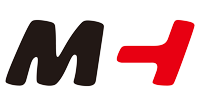1. Fire hydrant box
In case of fire, press the spring lock on the door according to the opening mode of the box door, and the pin will automatically exit. After opening the box door, take out the water gun to pull the water hose reel and pull out the water hose. At the same time, connect the water hose interface with the fire hydrant interface, pull the power switch on the kilometer wall of the box, and unscrew the indoor fire hydrant handwheel in the opening direction, so as to spray water.
2. Fire water gun
The fire water gun is a water jetting tool for extinguishing fire. It is connected with the water hose to spray dense and substantial water. It has the advantages of long range and large water volume. It is composed of pipe thread interface, gun body, nozzle and other main parts. The DC switch water gun is composed of the DC water gun and the ball valve switch, which can control the water flow through the switch.
3. Water hose buckle
Water hose buckle: used for connection between water hose, fire truck, fire hydrant and water gun. So as to convey the mixed liquid of water and foam for fire extinguishing. It is composed of body, seal ring seat, rubber seal ring, baffle ring and other parts. There are grooves on the seal ring seat, which are used to tie the water belt. It has the characteristics of good sealing, fast and labor-saving connection, and not easy to fall off.
Pipe thread interface: it is installed at the water inlet end of the water gun, and the internal thread fixed interface is installed at the fire hydrant. Water outlets such as fire pumps; They are composed of body and sealing ring. One end is pipe thread and the other end is internal thread type. They are all used to connect water hoses.
4. Fire hose
The fire hose is the hose used for water transmission at the fire site. Fire hose can be divided into lined fire hose and unlined fire hose according to materials. Unlined water hose has low pressure, large resistance, easy to leak, easy to mold and rot, and short service life. It is suitable for laying in the fire field of buildings. The lining water hose is resistant to high pressure, abrasion, mildew and corrosion, is not easy to leak, has small resistance, and is durable. It can also be bent and folded at will and moved at will. It is convenient to use and is suitable for laying in the external fire field.
5. Indoor fire hydrant
A fixed fire fighting tool. The main function is to control combustibles, isolate combustibles and eliminate ignition sources. Usage of indoor fire hydrant: 1. Open the fire hydrant door and press the internal fire alarm button (the button is used to alarm and start the fire pump). 2. One man connected the gun head and water hose and ran to the fire. 3. The other person connects the water hose and the valve door. 4. Open the valve anticlockwise to spray water. Note: in case of electric fire, cut off the power supply.
6. Outdoor fire hydrant
The utility model relates to a fixed fire-fighting connection equipment installed outdoors, including outdoor aboveground fire hydrant, outdoor underground fire hydrant and outdoor direct buried telescopic fire hydrant.
The ground type is connected with water on the ground, which is easy to operate, but easy to be collided and frozen; The underground anti freezing effect is good, but a large underground well room needs to be built, and the firefighters need to receive water in the well during use, which is inconvenient to operate. The outdoor direct buried telescopic fire hydrant is usually pressed back below the ground and pulled out of the ground for work. Compared with the ground type, it can avoid collision and has good anti freezing effect; It is more convenient than underground operation, and the direct burial installation is simpler.
Post time: Jun-30-2022
